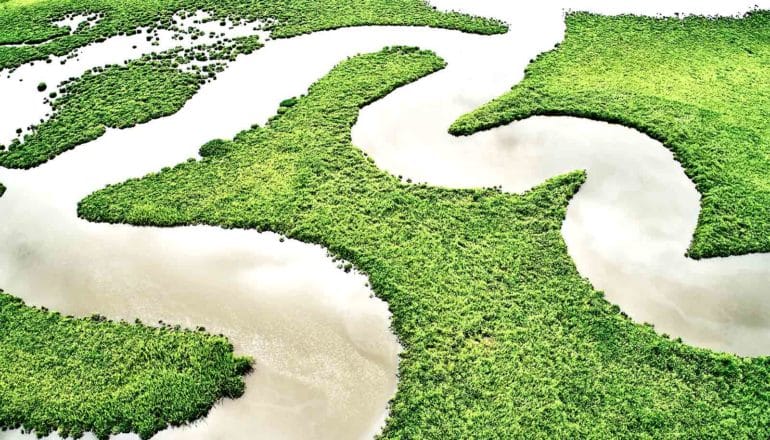
A new study shows climate change—not water and land management—plays a crucial role in changes in rivers and streams at the global level.
Climate change affects the water balance of our planet: depending on the region and the time of year, this can influence the amount of water in rivers potentially resulting in more flooding or drought.
River flow is an important indicator of water resources available to humans and the environment. The amount of available water also depends on other factors, such as direct interventions in the water cycle or land use change. If, for example, water is diverted for irrigation or regulated via reservoirs, or forests are cleared and monocultures grown in their place, this can have an impact on river flow.
However, researchers have not yet investigated how river flow has changed worldwide in recent years using direct observations. Similarly, researchers had not to date clarified the question of whether or not globally visible changes are attributable to climate change or to water and land management.
Now, researchers have successfully broken down the influence of these factors, after analyzing data from 7,250 measuring stations worldwide. The study, published in the journal Science, demonstrates that river flow changed systematically between 1971 and 2010. The study revealed complex patterns—some regions such as the Mediterranean and north-eastern Brazil had become drier, while elsewhere the volume of water had increased, such as in Scandinavia.
Global changes in river flow
“The actual question, however, concerned the cause of this change,” says lead author Lukas Gudmundsson, senior assistant in the group led by Sonia Seneviratne, professor at the Institute for Atmospheric and Climate Science at ETH Zurich.
To answer this question, the researchers carried out several computer simulations, using global hydrological models fed with observed climate data from the period studied (1971 to 2010). The results of the model calculations closely matched the analysis of observed river flow. “This means that climatic conditions can explain the observed trends in the flow volumes,” Gudmundsson says.
In a second procedure, the researchers included additional water and land management in their simulations in order to study the influence of these factors. This did not affect the result, however. “Changes in water and land management are evidently not the cause of global changes in rivers,” Gudmundsson says.
Although water management and land use can result in large local fluctuations in flow volumes, investigating this was not within the scope of the study, says Gudmundsson. “For us, it was not about local trends but global changes that become visible over longer periods.”
This is why the researchers did not consider data from individual measuring stations in isolation, but collated them into larger subcontinental regions for the analysis, thereby making it possible to identify the influence of climate change.
Model offers a ‘reflection of reality’
The researchers could substantiate the role of climate change using the detection and attribution method. For this, they compared the observations with simulations from climate models calculated once with man-made greenhouse gases and once without.
In the first case the simulation matched the actual data, but in the second case it did not. “This suggests that the observed changes are highly unlikely without climate change,” says Gudmundsson.
The study is the first to use direct observations to demonstrate that climate change has a globally visible influence on rivers. “This was only possible thanks to the great collaboration between researchers and institutions from 12 countries,” says Gudmundsson.
The data collection from the 7,250 measuring stations worldwide was also the result of a joint effort: researchers had collated the data with Australian collaboration partners in a previous study. This data now represents the largest global data set with river flow observations available today. “Thanks to this data, we were able to validate the models and demonstrate that they provide a good reflection of reality,” says Gudmundsson.
This means that the models can also provide reliable scenarios on how rivers will continue to change in future. Such projections provide an important basis for planning in the affected regions in order to secure water supply and adjust to climate change.
Source: ETH Zurich
The post Climate change is altering rivers around the world appeared first on Futurity.
from Futurity https://ift.tt/3tolIjw
No comments:
Post a Comment